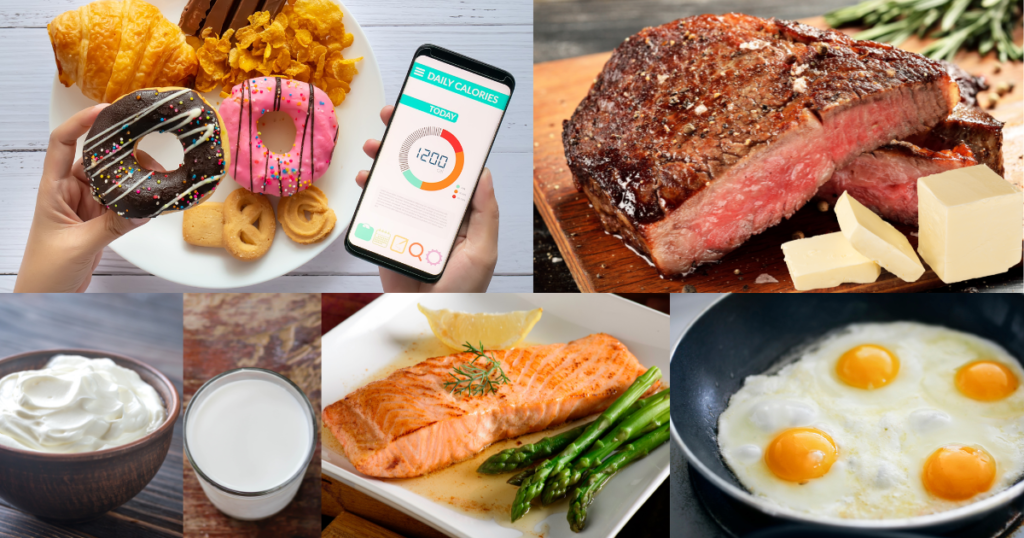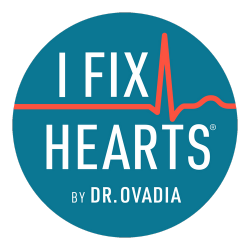‘Calories in, calories out’ (CICO) is possibly the most followed weight loss technique in America. As many as one in four Americans count their daily calories — and yet, studies show they’re gaining an extra 1% of their body weight every two years.
Excess food does eventually lead to weight gain. However, it’s clearly not the solution to our obesity epidemic.
I personally lost 100 pounds and kept them off — only after I gave up the CICO method. I realized getting healthier wasn’t about counting calories, but about eating whole, real food instead.
But first: why don’t calories matter that much?
To answer this question, we need to go back in time.
The term ‘calorie’ was coined in 1824 by French scientists who were defining the mechanics of heat expenditure. The word started to become popular in America by 1896, when Professor Wilbur O. Atwater started performing experiments on graduate students.
Atwater used a calorimeter — or a chamber used to measure the heat of engines and explosives — to calculate how much heat came off the human body after eating food like meat, milk, or potatoes. He quickly concluded that foods like flour resulted in a large amount of thermal energy, while ‘less nutritious’ foods like lettuce, fruit, and fish gave off little if any heat.
As we now know, this is an incredible oversimplification of an incredibly complex process. When we quantify food like this, we strip away its nuances on both a nutritional and cellular level.
For example:
Not all calories are the same
A 300-calorie donut may technically have the same ‘thermal energy’ as a 300-calorie steak. But you and I both know their nutrient levels are wildly different — there’s almost no sense in comparing apples and oranges.
We haven’t even factored in your gut microbiota yet, since metabolically healthy people may get more nutrients from their food than those who are unhealthy. This means a 170-calorie snack of almonds may actually result in more or fewer calories depending on your unique body.
Calorie labels are often a distraction
Just because food has ‘low calorie’ on the package doesn’t mean it’s healthy.
How many times have you passed by ‘low calorie’ foods that have fake sugar, vegetable oil, or food dye in the ingredients list?
Look at sweetened almond milk, for example. A cup of this may have fewer calories than whole or raw milk, but you’re still getting added sugar, preservatives, and seed oils, which aren’t conducive to metabolic health.
You should also know the FDA allows for a calorie deviance of 20%. This means a 200-calorie protein bar could actually be 240 calories, even if the label says otherwise.
And pay close attention to marketing labels such as ‘keto-friendly’ or heart-healthy.’ These terms aren’t regulated by the FDA, and more likely than not, they’re an attempt at health-washing ultra processed food.
Counting calories for weight loss doesn’t work
Let me be clear: it is 100% possible to lose weight by restricting the amount of food you eat. But my issue with calories isn’t losing pounds — it’s keeping those pounds off long-term.
Approximately 80% of people attempting to lose weight won’t lose a ‘meaningful’ amount. Even if they do lose weight, there’s a 90% chance they’ll gain 80% of it back. Just look at the contestants on Biggest Loser, for example.
This inability to lose weight isn’t due to ‘rapid weight loss,’ either. Studies show even gradual weight loss methods with CICO can lead to weight regain over time.
The sustainable way to lose weight and keep it off
CICO may once have been cutting-edge science, but in a new age of research, it’s getting left behind.
If you’re struggling with conventional diets and weight loss plans, I promise: it isn’t just you. Diets relying on CICO are missing the point— and it’s probably much simpler than you’d think.
This is all you need to lose weight sustainably:
Whole, real food
This includes anything that comes from the ground or eats things that grow on the ground. You’re more likely to find this around the outer ring of your grocery store, since the center aisles usually contain boxed or processed food.
I strongly suggest you focus on animal protein, especially ruminants such as beef, bison, and lamb. Adding plenty of animal-based foods such as eggs, milk, and organs can also boost your satiety levels and help you eat less.
If you’re not sure whether something is a whole, real food, just use your common sense. Would your grandparents recognize it as food? Are there more than five ingredients on the list? Remember: your goal is to cut out sugar, seed oils, and additives, so read the label as much as possible.
Resistance exercise
You’ve probably heard that cardio exercises are the best way to burn fat. While almost any amount of exercise is beneficial during weight loss, it’s not necessarily the best long-term strategy.
Because contrary to popular belief, you cannot exercise your way to weight loss.
For example:
- Cardio exercises may suppress your appetite in the beginning, but they may cause you to eat larger meals later. And if you associate exercise with getting ‘permission’ to eat, you may start developing unhealthy habits around food.
- Cardio exercises burn fewer calories than you’d think. If you’re jogging at an average pace, that’s approximately 100 calories per mile. Plus, your body will conserve around 28% of your energy after exercise, so there’s no accurate way to calculate true expenditure.
- Excess cardio could affect muscle growth and speed up the process of atrophy. If you don’t do enough resistance exercise, you’ll eat away at your muscle, which slowly chips away at your metabolic health.
Weight-bearing exercises are the easiest way to restore your metabolic health. You’ll gain active muscle, improve your gut microbiome, and give yourself margin to eat whole, real foods.
The best part? It takes four weeks or less to start seeing noticeable improvements.
Holistic wellness
The amount you eat and the amount you move will always have some impact on your weight. However, ‘eat less and move more’ is too reductionist — you also need to consider your lifestyle habits.
For example:
- How much are you sleeping? Not enough, and you’re more likely to hold on to weight.
- How often are you stressed? Stress is directly correlated to weight gain.
- How much are you drinking? The average American needs more hydration than they’re currently getting, and if you’re regularly drinking alcohol, it might be time to give up the habit.
If you can get these factors under control, you may start losing weight without even trying.
Starting off on the right foot
The CICO method has been drilled into us for decades, and changing the old narrative may take some time.
But while this way of eating will require major lifestyle changes, getting into a strong community can help you make the mental shifts. You’re welcome to join my Elite Health Coaching group for access to 1:1 metabolic coaches, community support, and monthly AMAs.

